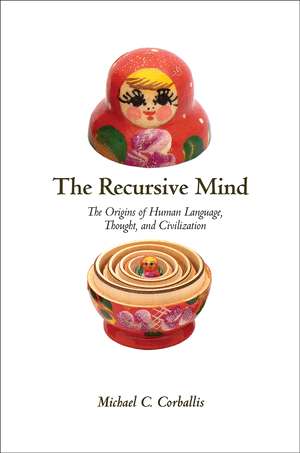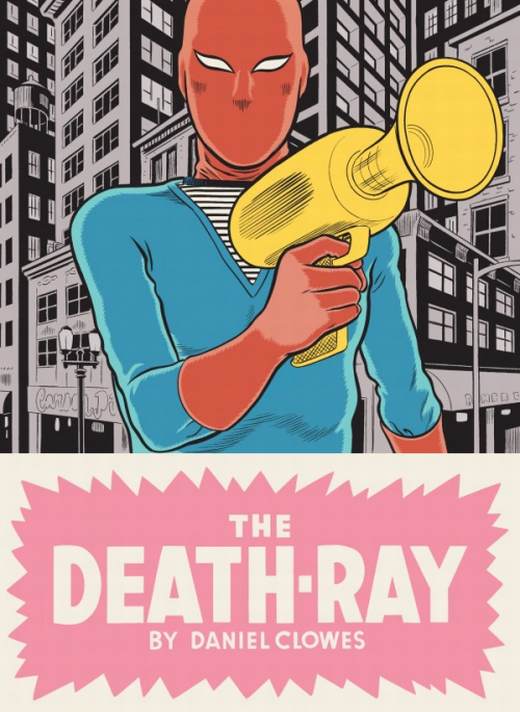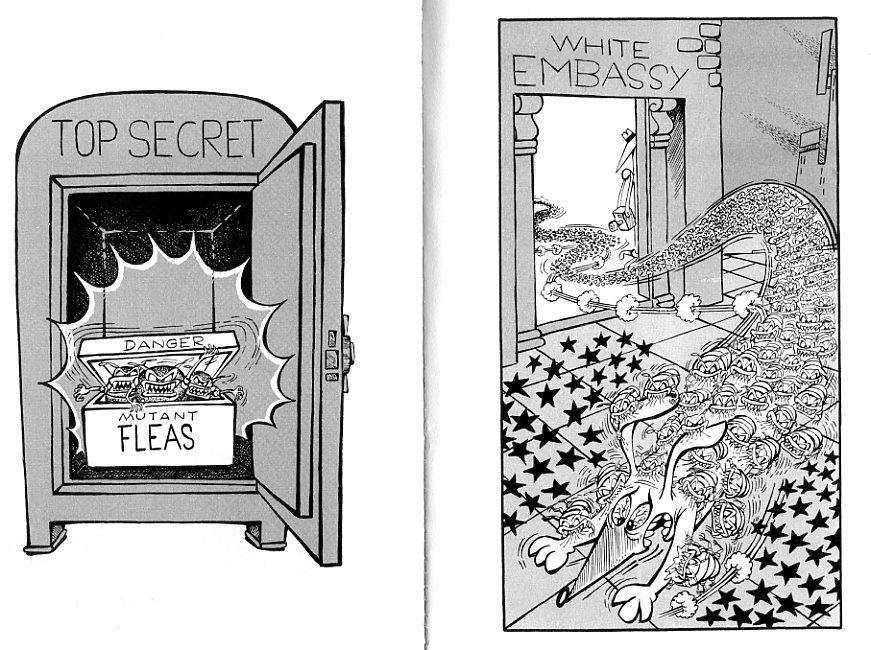“From a scientific viewpoint, the only real contender for the seat of the mind, or even the soul, is the brain,” says Michael C. Corballis in his new book The Recursive Mind: The origins of Human Language, Thought, and Civilization.
Corballis is an evolutionary biologist, and, as he mentions repeatedly, an atheist. So when he says that the brain is the “only real contender” for the soul what he actually appears to mean is that there is no real contention at all. You don’t need to assume outside forces to explain human beings. You just need to look at the holy atavistic trinity of evolutionary psyche—primitive cultures, great apes, and autistics. Using the deviations of chimps, rain-forest dwellers, and Rain Man, science can triangulate normality through entirely material means. There is no need to postulate a soul, or God, or transcendence, or miracles.
The refusal of miracles is particularly important for Corballis, and it leads him to some surprising places. Specifically, it causes him to reject the idea that what makes humans into humans is language. Other writers, like Noam Chomsky, have argued that Homo sapiens became the Homo sapiens we know and (more or less) love when they learned to talk.
Chomsky believes the ability to understand language is innate, and that that ability has to precede the use of language itself. This creates a difficulty, though. Joe Hominid, in Chomsky’s view, would have gained no advantage just because deep in his skull he was suddenly able to talk to Jane Hominid. Eventually, of course, the Hominids would learn to converse and this would help them collaborate in the hunting and tracking of mammoths and/or tubers. Until they actually had language, though, the ability to speak would have done nothing for them.
Since, in Chomsky’s view, there was a lag between ability for language and actual language, natural selection is taken out of the picture. Instead, Chomsky suggests that the ability to use language was a bolt from the developmental blue. Or, in Corballis’ paraphrase, it was the result of, “some single and singular event causing a rewiring, perhaps a fortuitous mutation, in the brain.” Corballis notes drily that Chomsky’s “account, although not driven by religious doctrine, does smack of the miraculous.”
Corballis’ goal, then, is to get rid of the miracle. And he decides that the best way to do this is by unseating language as the key to humanity. For Corballis, In the beginning was the Word, should be replaced by, In the beginning was recursion.
Recursive thinking, for Corballis, is the ability to think about thinking. He identifies several recursive processes as characteristic of human beings. First, he points to mental time travel—the ability to imagine past events within current consciousness. This is the basis both of memory and of fiction, which for Corballis is a kind of memory of the future. Corballis also singles out theory of mind—the ability to imagine the state of mind of others (and therefore to imagine them imagining your state of mind and you imagining their state of mind imagining your state of mind imagining their state of mind, and so on.) Corballis argues that theory of mind allows for the development of language. In order to talk to somebody, you have to have a sense that there is a somebody, a consciousness, out there to talk to. Recursion allows humans to share each other thoughts, and it is the sharing of thoughts which allows for language, rather than language which allows for the sharing of thoughts.
It’s an intriguing thesis, and to defend it, Corballis comes up with—well, with not much, at least as far as I can tell. He shows beyond a shadow of a doubt that songbird patterns can be explained without assuming that songbirds have recursive thinking. He demonstrates that primates other than humans appear to have only a rudimentary theory of mind—though it’s hard to tell exactly how rudimentary, since their language is rudimentary too, so we can’t ask them. He notes that those with certain kinds of autism seem to have trouble with recursive thinking and with language. He puts great emphasis on the so-called mirror neurons in monkeys, which appear to be activated when the monkey sees another monkey acting in the same way as the monkey, and also seem to have something to do with language. So the mirror-neurons may link recursion and language—unless, of course, you turn to Corballis’ notes, where he admits that many researchers think the whole mirror-neuron/language connection is a load of monkey pooh.
John Horgan, writing in The Undiscovered Mind, suggested that Corballis’ difficulty in shoring up his theories is not his fault. Rather, it’s endemic to his discipline.
Evolutionary psychology is in many respects a strangely inconsequential exercise, especially given the evangelical fervor with which it is touted by its adherents. Evolutionists can take any set of psychological and social data and show how they can be explained in Darwinian terms. But they cannot perform experiments that will establish that their view is right and the alternative view is wrong—or vice versa.
The specific problem in Corballis’ book is that he cannot experimentally separate recursion and language. How does he know that language didn’t allow us to engage in recursive thinking rather than the other way around? His efforts to nail down this point—by, for example, referring to a remote tribe which some people think may have non-recursive language, or by pointing to autistic people who have difficulty with some kinds of recursive thought but can still learn language—are inconclusive. In fact, after reading this book, I’ve come away impressed not with how much evolutionary psychologists know, but how little. One sheepish note buried in the back of the book even admits that primatologists aren’t sure whether gorillas incessantly vocalize or hardly vocalize at all. If we can’t tell how often gorillas howl, how are we supposed to figure out how human speech is related to human consciousness?
It’s not that Corballis doesn’t have any good ideas. His argument that language developed first as gestures rather than speech, for example, seems both clever and perfectly plausible. And seeing recursion as the essential human trait is entirely reasonable… and even (perhaps despite Corballis’ best efforts) has theological precedent. Reinhold Niebuhr, for example, argued that what made humans human was their capacity for “self-transcendence.” Human beings can look at themselves looking at themselves; they know they’re going to live and that (less cheerily) they’re going to die. “Man’s melancholy over the prospect of death is the proof of his partial transcendence over the natural process which ends in death,” Niebuhr writes in his essay “Humour and Faith.” Recursion, our ability to see ourselves being ourselves, is, for Niebuhr, both our triumph and our tragedy.
Corballis doesn’t see it as a triumph or a tragedy, though. Nor does he phrase recursion in terms of self-transcendence. That sort of theological language is…well, too theological. Instead, Corballis prefers to discuss material things; why humans stood upright, where the Neanderthals went, how different languages indicate tense. All of which is certainly interesting, but misses the main point.
That point being that humans actually are fairly miraculous. I actually find Corballis’ argument for gradual change under evolutionary pressure more convincing than Chomsky’s theory of sudden mutation. And yet, Chomsky’s bolt from the blue is a metaphoric truth, even if it isn’t a factual one. Humans are really, really different than our closest relatives—more different than can be accounted for on the basis of evolution or genes. There’s a rupture there that defies fully material explanation.
Which is where language, followed or preceded by recursion, comes in. Language is both social, existing between individuals, and private, existing within the core of our identities. “I think therefore I am” is a piece of language. If it can’t be said, it doesn’t exist, and then where are we?
Perhaps even more importantly, language is a material thing; it’s a technology. But it’s also inseparable from ourselves. We create it and it creates us, recursively. Language retools us. We were apes—we still are apes—but we’re apes that are constantly remaking ourselves in the image of words such as “human being.” Evolutionary psychologists can natter on (as Corballis does) about how women are biologically programmed to be nurturers and men are biologically programmed for science. But the more they natter, the more they show that the nattering is what matters, not the programming. What our ancestors did is a lot less important than what they said.
And if the saying is the thing, it’s possible that Corballis is looking for the soul in the wrong place. Perhaps it’s not in the brain, after all. Maybe it’s where the Bible says it is—in that non-space between and within us known as the Word.










